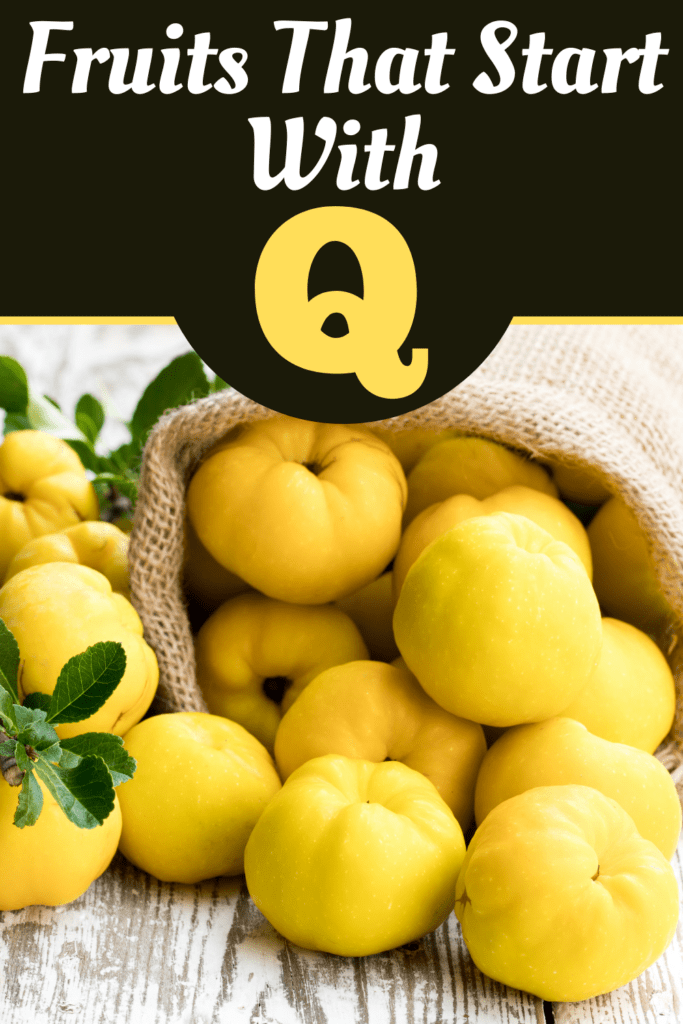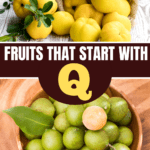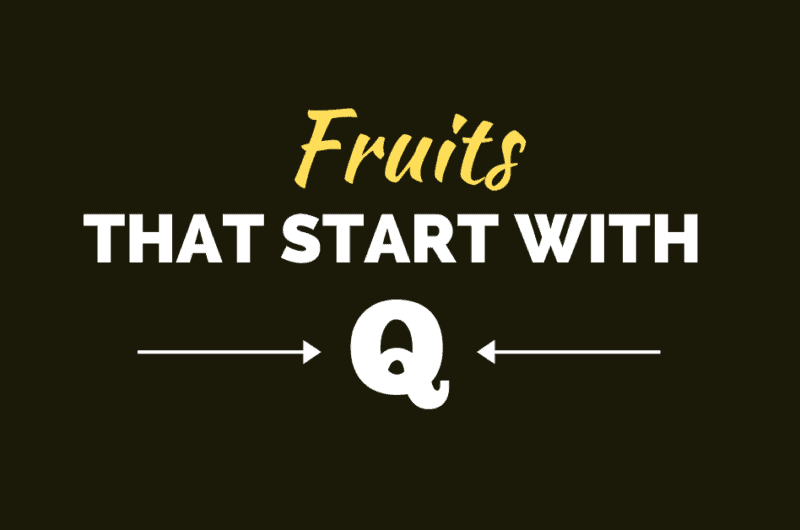There aren’t many fruits that start with Q, but what this list lacks in length, it makes up for in flavor.
From delectable quinault strawberries to juicy quince, Q fruits are bursting with fresh, fragrant tastes.
So throw them into your next dessert recipe, take them to parties, or just snack on them raw.
This list of fruits that start with Q will help you take your fruit game to the next level.
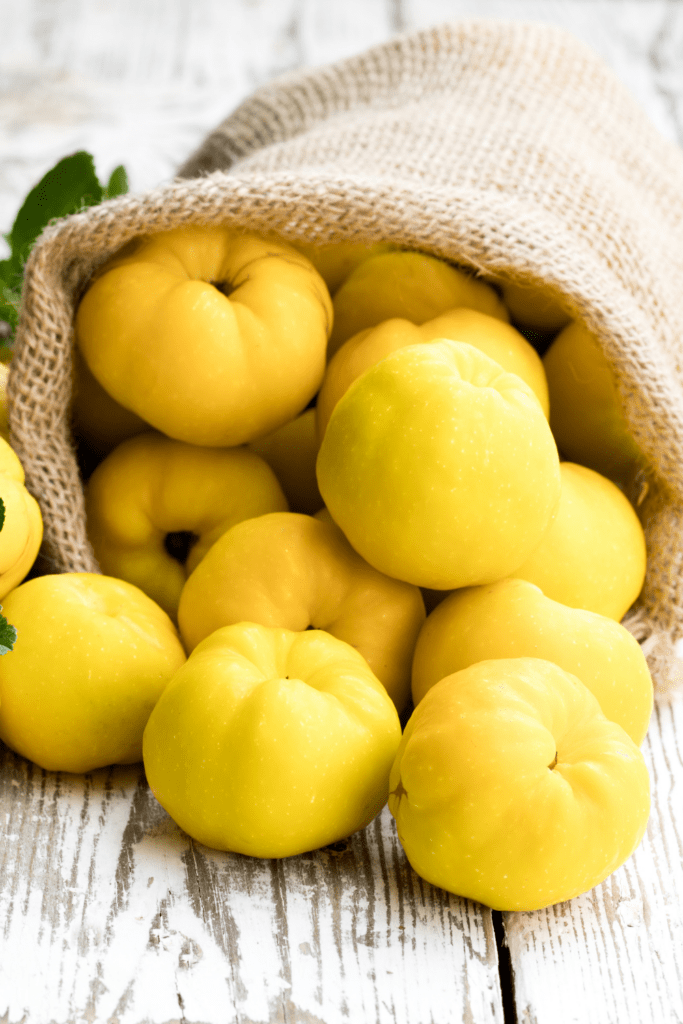
1. Quince
Quince is one of the oldest cultivated fruits.
Snack on this pear-shaped produce, and you’re keeping company with the ancient Romans and Greeks, as well as medieval meal planners.
It may even have a touch of the divine, as some biblical scholars believe that quince grew in the garden of Eden.
Divine it may be, but quince’s appearance doesn’t match its illustrious history.
Lumpy, hard, and with a spongy texture, it’s not the most appetizing fall fruit.
Quince shines when it’s cooked, releasing a delicate, aromatic scent while turning soft and sweet.
The syrupy, stewed flesh can be used in pies, sauces, and a jam-like paste that goes with pretty much anything.
Eat your cooked quince with yogurt, spread it on toast, or have it straight from the spoon.
Overlook quince in favor of apples or pears, and you’ll miss out!
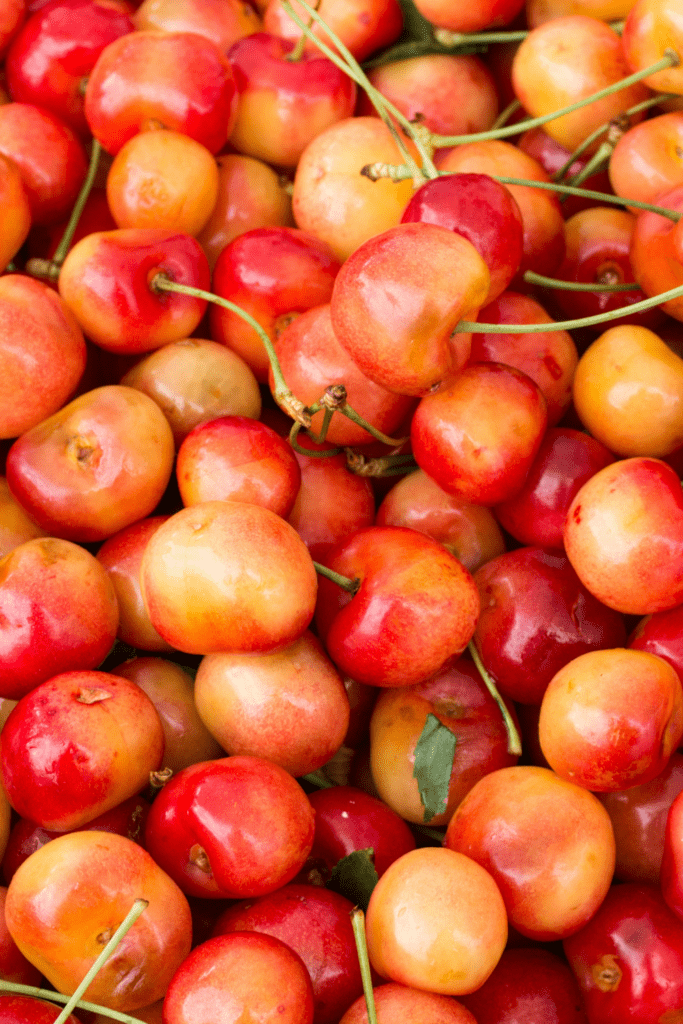
2. Queen Anne Cherries
Also known as Royal Anne or Napoleon cherries, this variety is best enjoyed in mid-summer when it’s at peak ripeness.
Queen Annes are very similar to Rainer cherries in both appearance and taste.
They’re light pink and yellow with a firm texture and delicate, sweet flavor.
Like all cherries, this variety provides a big nutritional hit.
They’re high in antioxidants, vitamin C, and anti-inflammatory compounds.
Studies show cherries can help treat conditions like arthritis, diabetes, and hypertension.
And you can get your medicine year-round since this variety is great for canning and preserving.
You can even get really fancy and turn them into your own cocktail-ready maraschino cherries by simmering them in syrup.
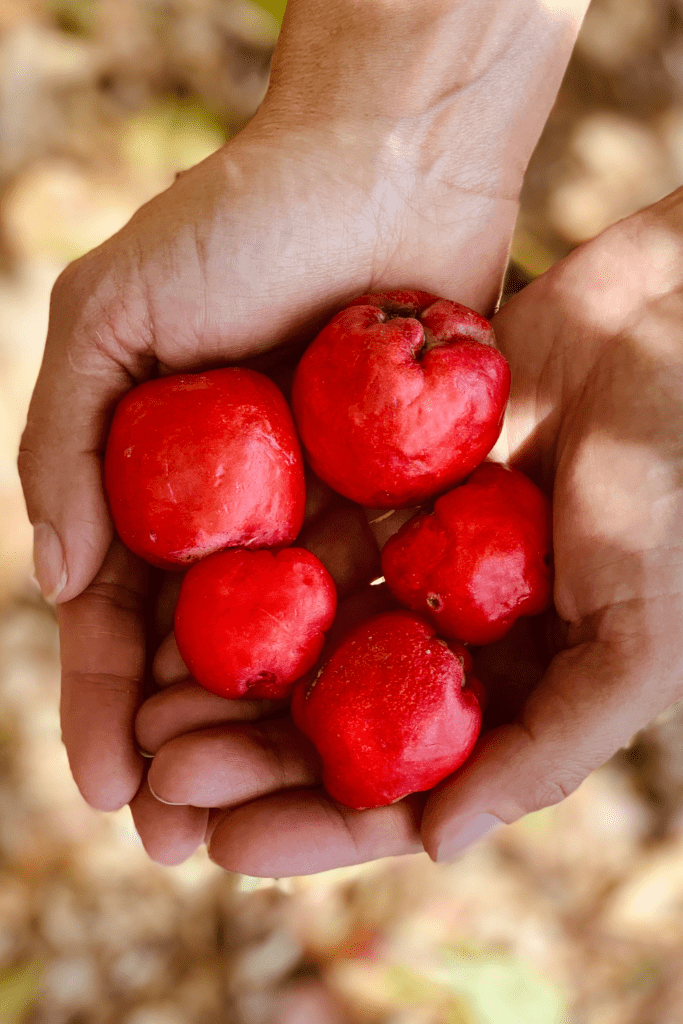
3. Quandong
Quandongs, or native peaches, are very popular in Australia where they grow wild in the outback.
This Aussie superfood looks like a bright red and very large berry.
Don’t be fooled though, that deliciously plump round berry contains mostly seed.
The thin, but tasty flesh is wrapped around a large seed that can be made into crafts and jewelry.
Quandongs are highly prized not just for their tangy-sweet flavor (perfect for tarts apparently) but also medicinal properties.
In bush medicine, quandongs are used to treat a variety of ailments from toothache to wounds.
The fruit’s antibacterial properties made it a must for Aborginal healers.
4. Quararibea
Quararibea look like mangoes, but taste like apricots. Oh, and there’s a hint of earthy pumpkin in there, too.
It’s a unique, tropical flavor but you’re not likely to find Quararibea at the grocery store sadly.
That is, unless your grocery store specializes in South American rainforest fruits.
Quararibea are not widely cultivated outside of Brazil, Venezuela, or Colombia, although they were successfully grown in Florida in the 1960s.
If you do happen to go hunting for the fruit in South America, look for it under its local name – chupa chupa.
If you’re feeling really adventurous, try it in a cocktail like the locals.
Made from quararibea, lime juice, and passionfruit liquor, this has to be one of the most enjoyable ways to get your vitamin C!
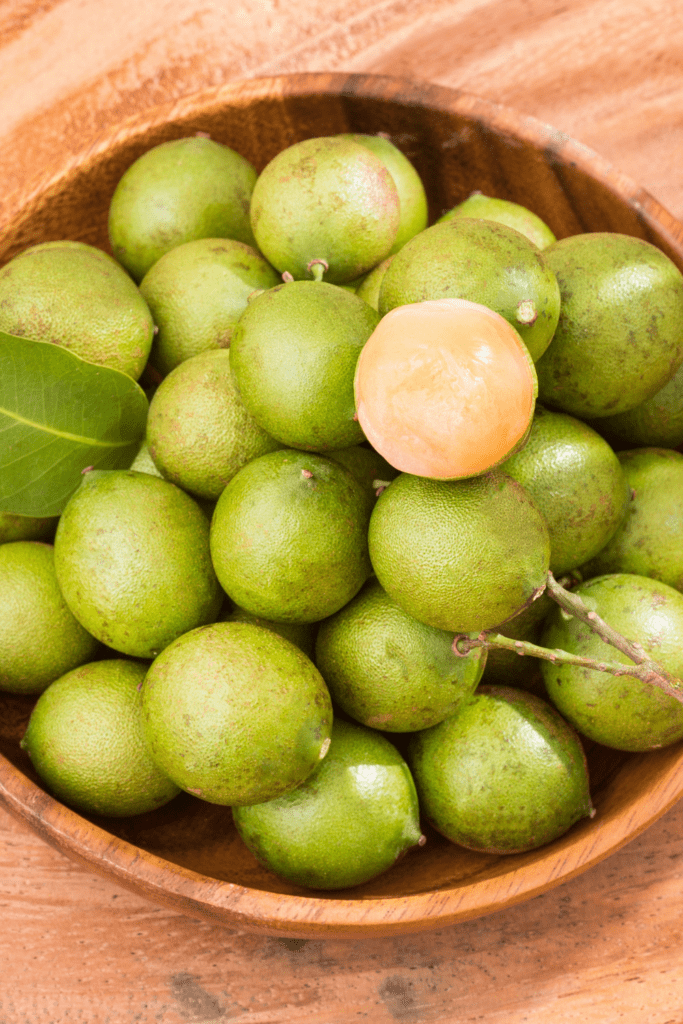
5. Quenepa
Also known as guinep, quenepa is very popular in tropical regions like the Caribbean.
The fruit resembles small, green grapes but has a unique taste that’s both tart and tangy.
Go anywhere in the islands, and you’ll likely see vendors selling bags of guinep by the side of the road.
Also known as a Spanish lime, quenepas are a feature of many inventive Caribbean recipes.
However, it’s most commonly eaten raw or blended into a refreshing juice to take the sting out of the intense tropical heat.
If you’ve never encountered them before, they’re a fun fruit to try as-is.
Just crack the hard outer shell and suck out the creamy flesh.
Save the seed, as it can be roasted and salted to enjoy later as a crunchy, addictive snack.
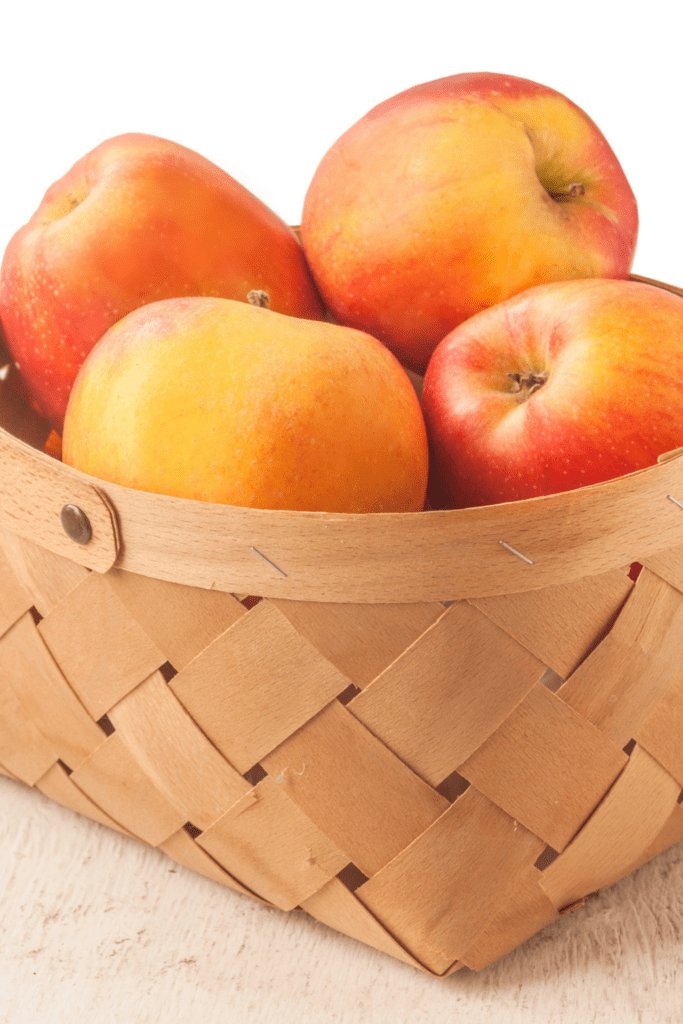
6. Querina Apple
This French variety is a tart take on Golden Delicious.
Firm, juicy and very hardy, it’s a popular crop on both sides of the Atlantic although North Americans may know it by its US name – Florina.
First commercialised in the 1980s, this is a great late fall fruit.
It’s mainly enjoyed raw for its delicate aromatic taste, but some enterprising apple fans have been known to make tasty ciders from Querina apples.
And you won’t have to rush after harvest to get your cider brewed. Querina apples will last for months.
Just keep them somewhere dry and cool to enjoy their fresh flavor up to 3 months after picking.
7. Quinault Strawberry
The quinault strawberry is a type A sort of berry, going above and beyond to produce two harvests a year.
This remarkable fecundity earned the fruit it’s other name – the everbearing strawberry.
You can enjoy the quinault’s juicy sweetness in both spring and fall, giving you a chance to try a variety of dessert recipes.
Blend with ice to create a deliciously sweet sorbet on a warm spring day, or bake them into a tart for a juicy twist on a fall favorite.
If you fancy growing quinault yourself, pick a sunny patch and keep the plant moist. It thrives in the Pacific northwest and the Midwest.
